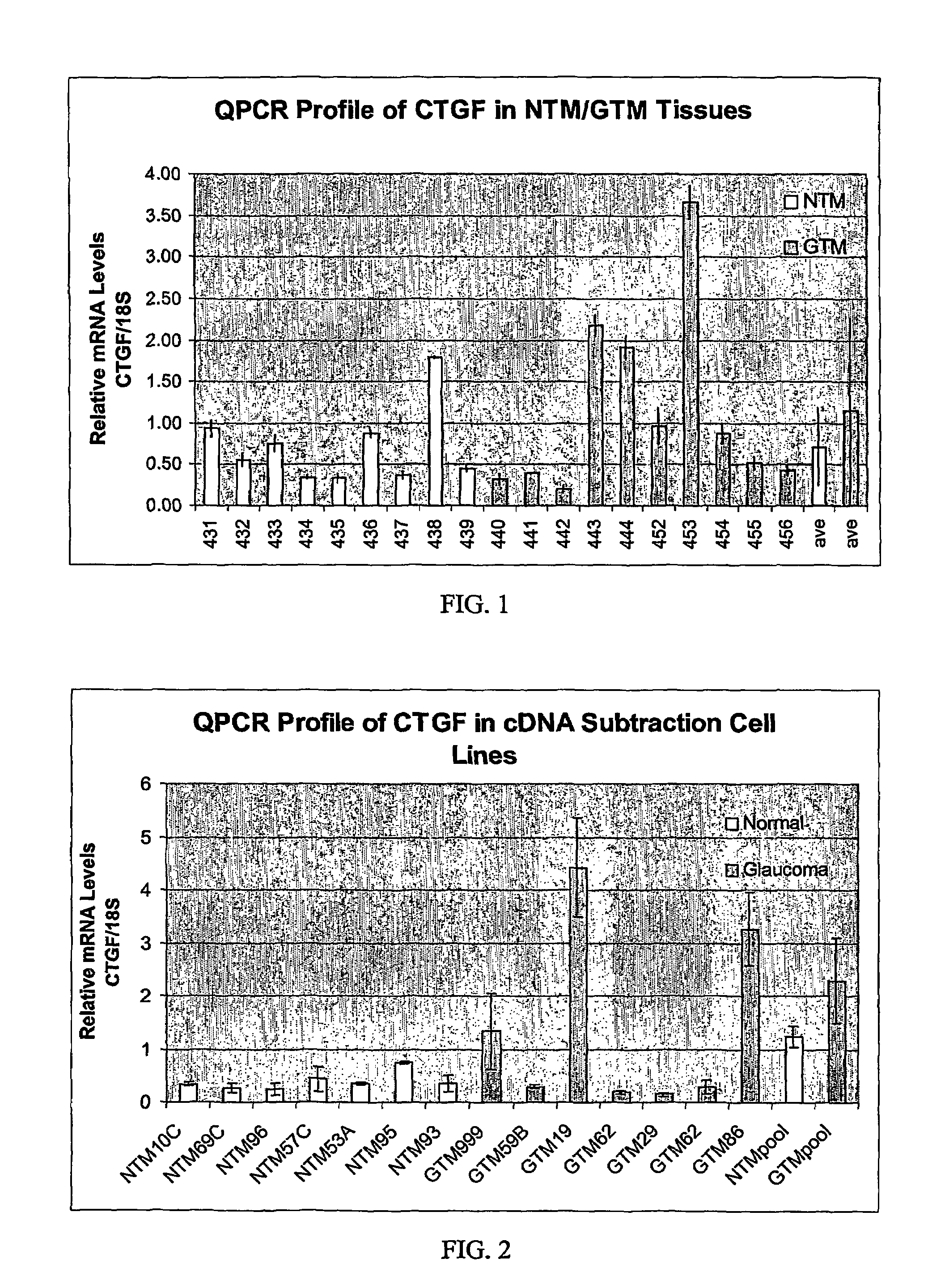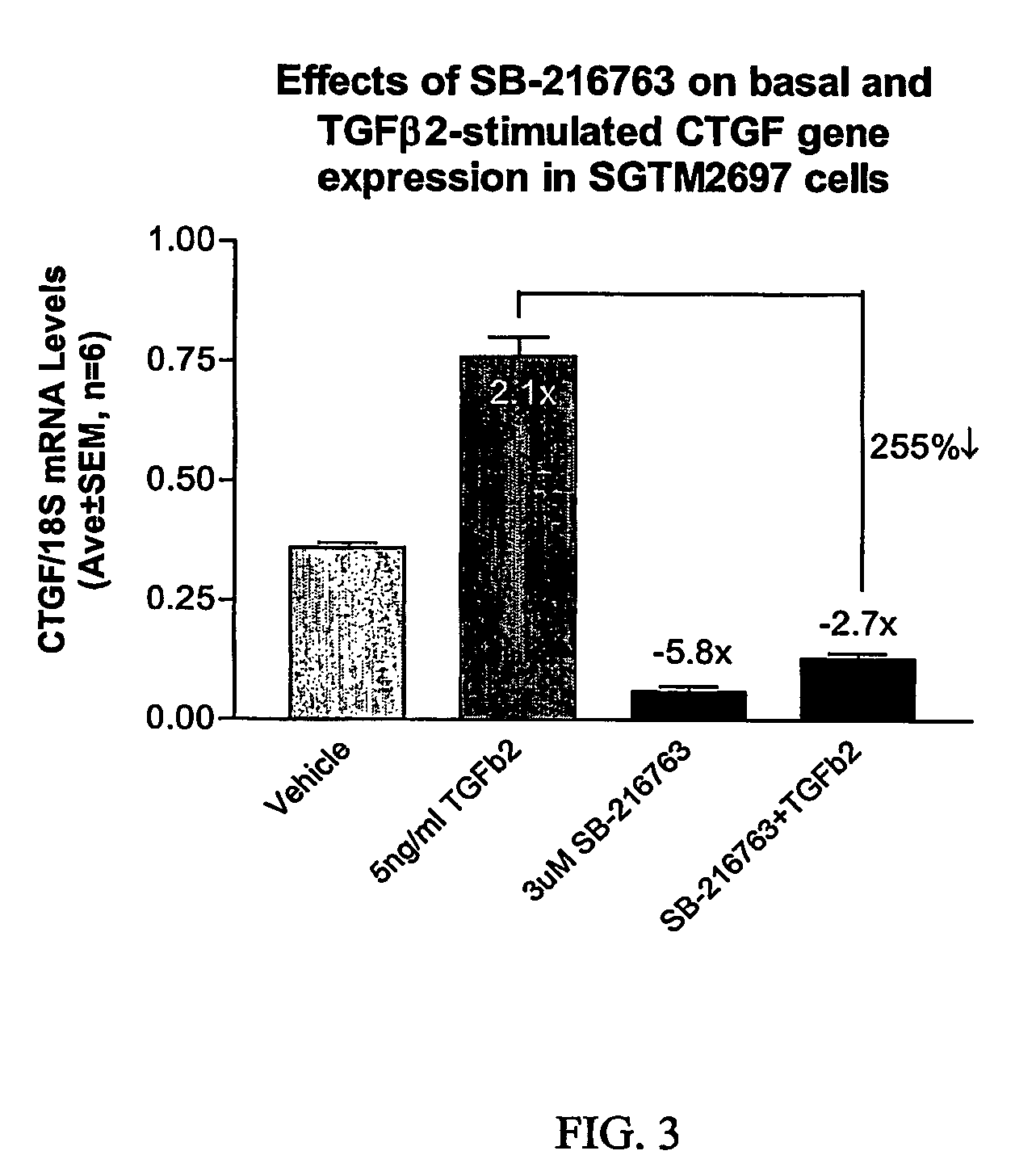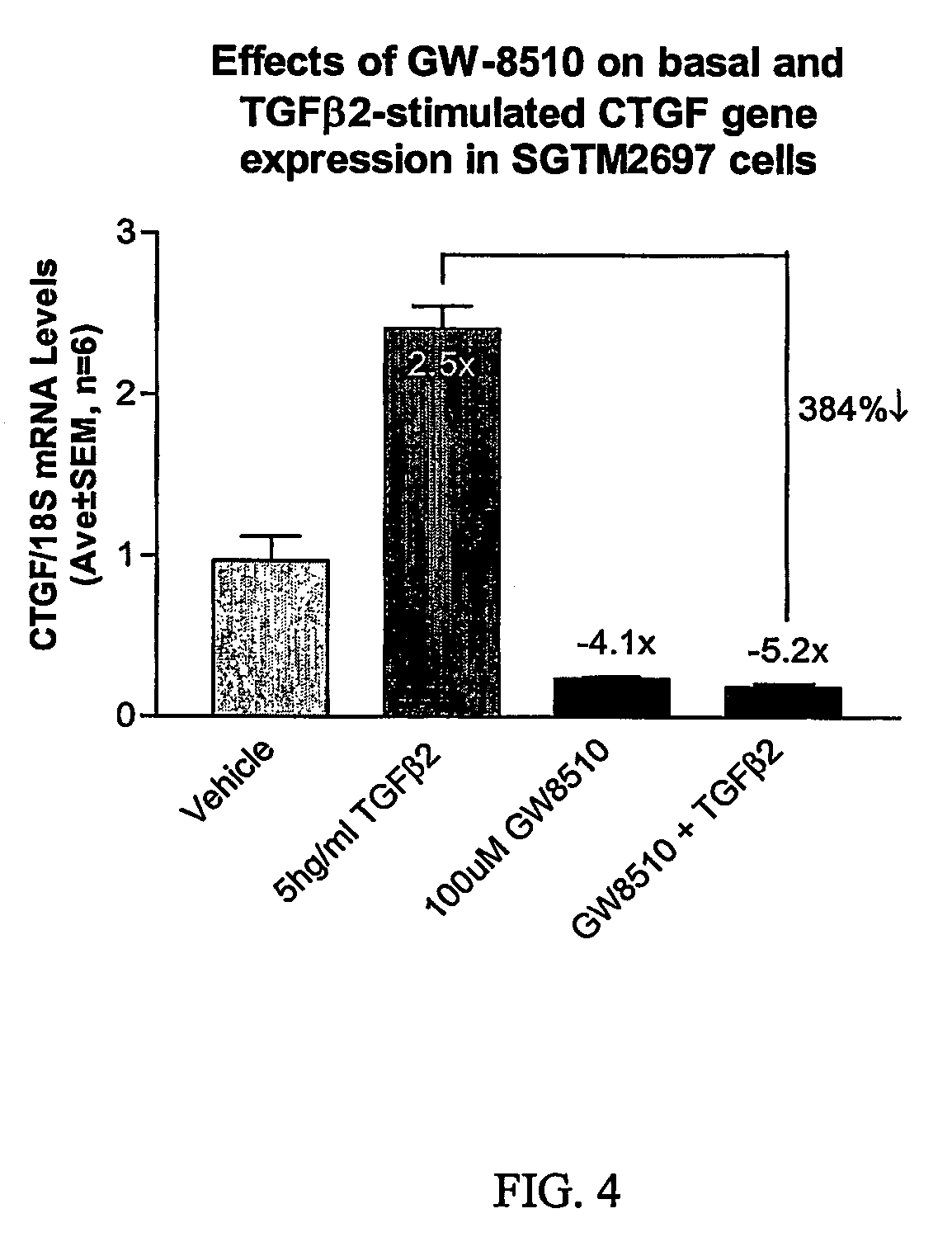Agents which regulate, inhibit, or modulate the activity and/or expression of connective tissue growth factor (CTGF) as a unique means to both lower intraocular pressure and treat glaucomatous retinopathies/optic neuropathies
a technology of connective tissue growth factor and ctgf, which is applied in the field of ocular conditions, can solve the problems of reducing the normal ability of aqueous humor to leave the eye without closing the space, progressive visual loss and blindness, and degrading the extracellular matrix of the optic nerve head, so as to reduce the intraocular pressure, inhibit expression and/or signaling, and reduce the effect of intraocular pressur
- Summary
- Abstract
- Description
- Claims
- Application Information
AI Technical Summary
Benefits of technology
Problems solved by technology
Method used
Image
Examples
example 1
Expression of CTGF in Glaucomatous TM vs Non-glaucomatous TM
Microarray Screen
[0043]The mRNA transcript for CTGF was identified as being elevated in glaucomatous TM cells vs. normal TM cells by a GeneFilter® (Research Genetics) screen.
[0044]Five hundred ηg of total RNA (TRIzol Reagent; Invitrogen) was isolated from pooled (6 each) normal or glaucomatous TM cell lines as described (Shepard et al., IOVS 2001, 42:3173) and reverse-transcribed separately in the presence of 300 units of Superscript II RNase H— reverse transcriptase (Invitrogen), 100 μCi [α-33P]dCTP (10 mCi / ml, 3,000 Ci / mmol; Amersham), 0.33 mM dATP, dGTP, dCTP (Promega), 3.3 mM DTT, 1×First Strand Buffer (Invitrogen), and 2 μg oligo-dT at 37° C. for 90 min. The radiolabeled cDNA was subsequently purified with Chroma-Spin 100 Columns (Clontech) according to the manufacturer's instructions. A single Genefilter® (GF211; Research Genetics) spotted with ≈4,000 known genes was used for hybridization with radiolabeled probe acco...
example 2
RNA Isolation and First Strand cDNA Preparation
[0048]Total RNA was isolated from TM cells using Trizol® reagent according to the manufacturer's instructions (Life Technologies). First strand cDNA was generated from 1 ug of total RNA using random hexamers and TaqMan® Reverse Transcription reagents according to the manufacturer's instructions (PE Biosystems, Foster City, Calif.). The 100 ul reaction was subsequently diluted 20-fold to achieve an effective cDNA concentration of 0.5 ng / ul.
Quantitative PCR
[0049]Differential expression of CTGF was verified by quantitative real-time RT-PCR (QPCR) using an ABI Prism® 7700 Sequence Detection System (Applied Biosystems). essentially as described (Shepard et al., IOVS 2001, 42:3173). Primers for CTGF amplification were designed using Primer Express software (Applied Biosystems) and anneal to adjacent exons of Genbank accession # NM—001901.1 (CAGCTCTGACATTCTGATTCGAA, nts 1667-1689 and TGCCACAAGCTGTCCAGTCT, nts 1723-1742) and generate a 76-bp am...
PUM
| Property | Measurement | Unit |
|---|---|---|
| concentration | aaaaa | aaaaa |
| volume | aaaaa | aaaaa |
| intraocular pressure | aaaaa | aaaaa |
Abstract
Description
Claims
Application Information
 Login to View More
Login to View More - R&D
- Intellectual Property
- Life Sciences
- Materials
- Tech Scout
- Unparalleled Data Quality
- Higher Quality Content
- 60% Fewer Hallucinations
Browse by: Latest US Patents, China's latest patents, Technical Efficacy Thesaurus, Application Domain, Technology Topic, Popular Technical Reports.
© 2025 PatSnap. All rights reserved.Legal|Privacy policy|Modern Slavery Act Transparency Statement|Sitemap|About US| Contact US: help@patsnap.com



